GAPS For Babies | GAPS Diet Food List By Stage
The goal of starting GAPS for babies is to heal the gut lining, enrich the baby’s microbiome and thus provide the nourishment through healthy baby food that a growing baby needs. Therefore GAPS is specifically beneficial for babies that struggle with diarrhea, colic, asthma, allergies, eczema, babies who started their life with antibiotics and finely those diagnosed with “failure to thrive” – meaning they seem to be dramatically smaller than other children the same age.
GAPS Diet For Baby
The GAPS diet is a phenomenal alternative therapy based on the idea that the baby’s overall health is linked to the digestive health. Unlike starting GAPS diet for kids, applying the same protocol is actually simpler and easier for small babies (infants). That’s why most advocated of the GAPS diet recommend trying the protocol at an early stage.
If you want to get to the root of the problem rather than simply address the symptoms with medications, then keep reading, we’ll discuss some of the leading causes of these health issues in children and what we can do to encourage gut healing from the beginning when the baby is still small.
Bellow I’m explaining the intestinal permeability / leaky gut in babies and it’s association with a variety of health issues as well as the breastfeeding role in baby’s immune system development. Then we’ll finish with steps and list of foods suitable for GAPS babies (between birth to 1 year of age) including the GAPS staple food: the meat stock.

GAPS Diet For Breastfed Baby
The baby’s health, growth, and development depends on the nutritional properties of mother’s milk.
The mother’s breast milk is more than just food for an infant, it has various nutritional and bioactive components including immune-modulating compounds (immunoglobulins, white blood cells, cytokines), a system promoting gut maturity (Human-milk oligosaccharides (HMOs), growth factors, hormones and bacteria.
The human breastmilk is a complex biofluid containing lipids, carbohydrates, proteins, including enzymes and endogenous peptides that play an important role in the development of baby’s gastrointestinal tract, immune system, and brain. Plus numerous living cells and organisms – making it a probiotic rich food that shape the infant gut microbiome.
No baby- formula can imitate that. That is why breastfed babies develop healthier gut flora than bottle-fed babies.
Moreover there is a 2009 study showing that artificially fed babies lack human milk factors promoting intestinal tight junction closure and the “formula” feedings cause mucosal damage leading to increased intestinal permeability aka “the leaky gut”.
Leaky Gut in Babies
Gut flora is the house keeper of the digestive system. A deficient gut flora make the infants susceptible to allergies, asthma, eczema, immune dysfunctions and nervous system disorders.
Babies are born with an immature immune system and gut barrier function, and there is a gradual decline in baby’s intestinal permeability over the first several months of life, with the biggest drop (gut closure) at approximately at 22 weeks.
The baby’s gut barrier is selectively allowing bioactive molecules (from breast milk) and antigens (like maternal antibodies, especially IgG) to pass through.
The microbial and dietary antigens (a product the mother/baby is allergic to) can also pass through baby’s gut barrier through breastmilk, and can trigger immune activation and pro-inflammatory responses. So it’s important to avoid those at least until the intestinal wall matures enough.
A healthy microbiome and the other bioactive components in the breast milk actually participate in tissue growth/ healing, and contribute to the tightening of intercellular junctions.
But if the beneficial bacteria is damaged or lacking (usually because of antibiotic use), it can no longer protect the intestinal wall. The opportunistic pathogens remain unchecked, they start to flourish and produce toxic substances. For that reason the whole gut lining becomes damaged, unbalanced and leaky.
This sets up a chain of degenerative changes which would further impair the gut wall’s ability to digest and absorb nutrients (even if the baby consumes enough amounts of food it can lead to malnourishment) hence the term “failure to thrive”.
Once those toxins end up in the bloodstream they affect the whole body. The big picture showing a compromised immune system due to self-intoxication coming from the bowel.
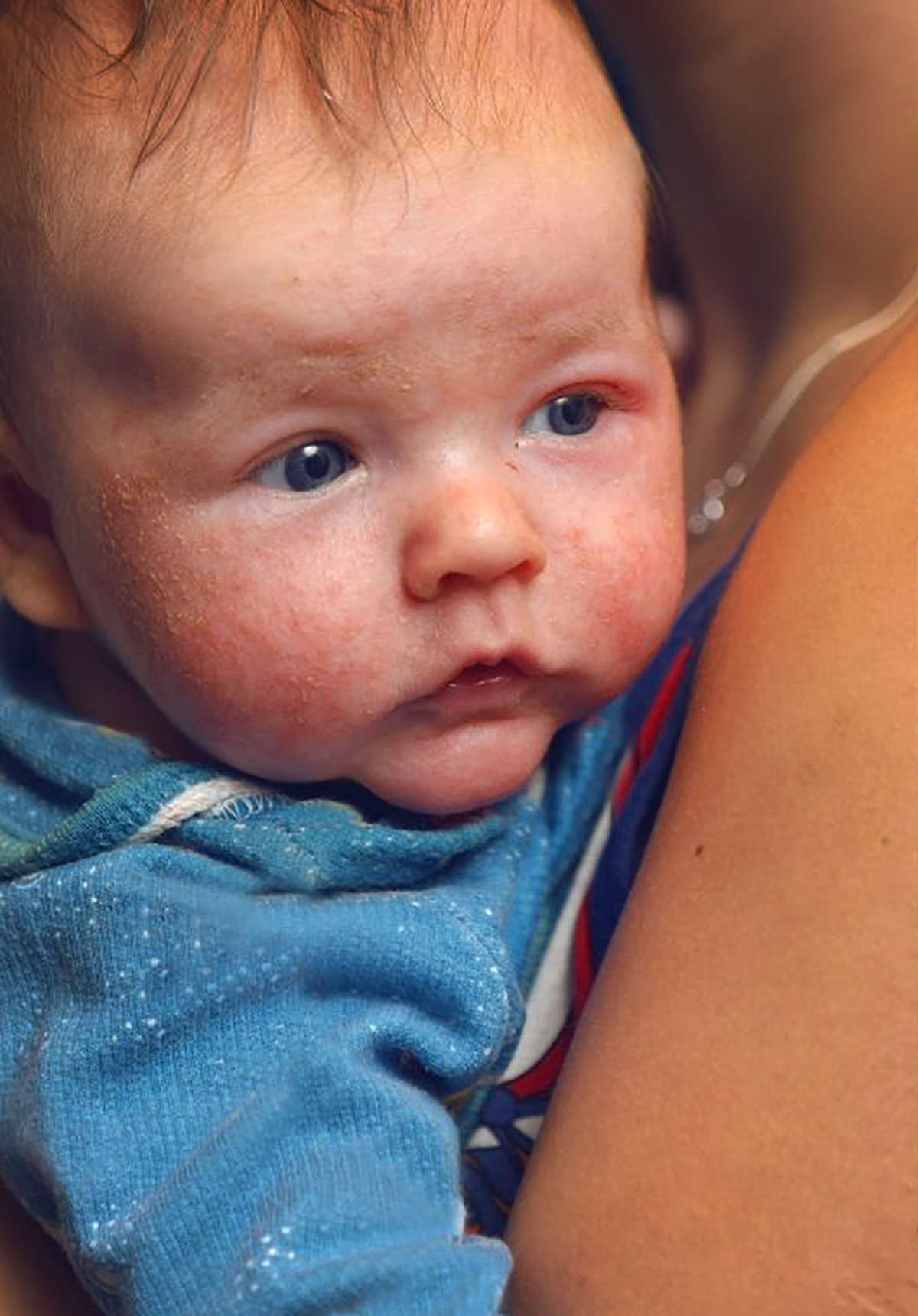
Factors which positively shape the infant’s microbiome include:
- vaginal delivery
- maternal good health and well-being
- long duration of lactation
- the absence of antibiotic treatment during both pre- and post-natal periods.
- the absence of NSAIDs (anti-inflammatory drugs) use (like ibuprofen) and steroid drugs.
Where Is Breastmilk Microbiome Coming From?
Two main pathways have been recognized as sources of the human milk microbiome:
- mother’s breast skin and baby’s mouth
- maternal gut microbiota (through the blood and lymphatic systems).
The delivery method might also influence human milk composition. Studies show higher bacterial diversity and richness in the milk from vaginal deliveries when compared to C-section deliveries.
Why Exclusively Breastfed Babies Still Have Health Issues?
In recent years many women are constantly exposed to toxic chemicals especially endocrine-disrupting chemicals that have the ability to bioaccumulate. These chemicals are passed through the placenta and are also absorbed at greater levels by fetuses than by the pregnant women themselves.
This, in combination with a damaged intestinal microbiome (due to heavy use of antibiotics or an unhealthy diet) is passed down across generations. The bacteria viruses and toxins are inherited by the baby.
Depending oh how toxic the mother is during pregnancy, different babies are born with a different toxic load. A baby with high toxic load will be more susceptible to environmental influences (allergies, infections and drugs).
Can Allergies Be Passed Through Breast Milk?
Allergies are inherited by the baby as well, the mother and baby basically share the same microbiome. Furthermore mothers can pass allergies to their babies while they are still developing in the womb. So if the mother consumes something that is allergic or intolerant to, the baby may develop colic, diarrhea, hives or eczema due to sensitivity to product’s antigens being passed through the mother’s milk.
The good news is that the transfer of sensitivity appears to fade with time (a few months), this is how outgrowing allergies is explained. And if the baby expands his gut microbial diversity and avoids any antibiotics, then in time he can develop a healthy immune response to most allergens.

This post may contain affiliate links. To read the disclaimer policy See This.
What Can you Do If Your Breastmilk is Contaminated
- Make some changes in your lifestyle to help decrease the presence of toxins in the body:
- change the diet (avoid processed foods and sugary foods, you can even try a relaxed version of GAPS diet yourself without initiating any detox reactions). Stop eating the food that your baby and you are allergic to.
- Limit exposure to common chemicals (paints, glues, nail polish, pesticides, cosmetics, cleaning chemicals, perfumes, hair dyes, dentist work, radiation and polluted areas).
- Add some good dairy free probiotics in the breastmilk, coat your nipple or add to the bottle.
- In rare cases when in the breast milk is found to have high levels of toxins and heavy metals and your baby fails to thrive even when you’re breastfeeding, then you could search a milk donor by doing a quick search online, you can find a milk bank in your state or local area. Or find a wet nurse, by establishing good relationships with healthy expecting mothers in your area. Formula is not a healthy option, it’s not even close to the quality of a breast milk.
Takeaway
It’s important to colonize the mother’s gut with beneficial bacteria prior the delivery in order to guarantee an appropriate bacterial community that will be transmitted to the newborn at birth.
Gaps Baby Protocol Phases
Fortunately most of your baby’s health problems (except the genetic ones) can be solves through a deep healing elimination diet called GAPS (Gut And Psychology Syndrome). If you’re new to what the GAPS diet here are the phases it consists of:
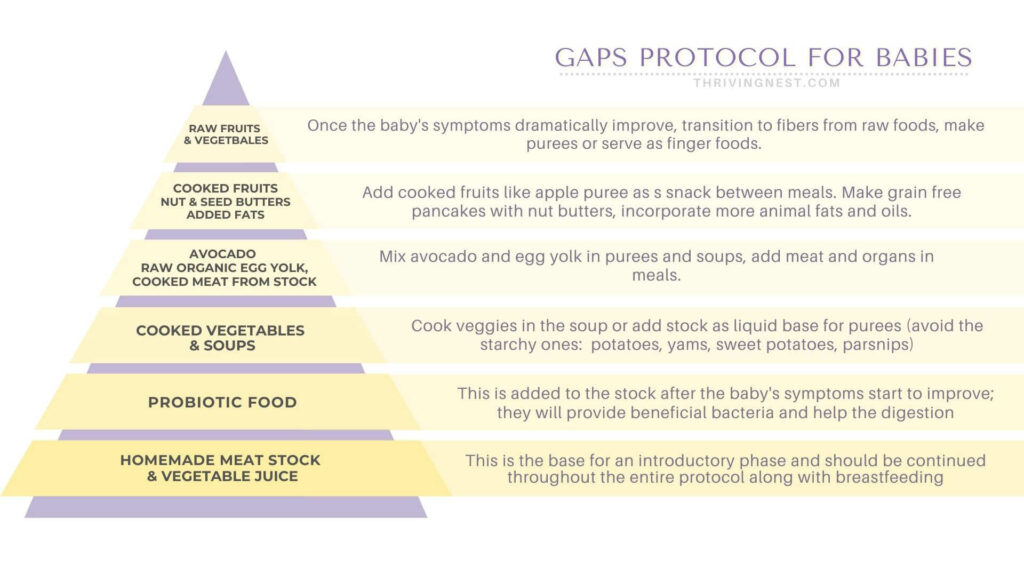
- Introduction Phase (up to a week or so) – the deep healing stage that is aiming to reduce gastro-intestinal symptoms, like bloating, pain, diarrhea, mucus or blood
- Maintenance Phase (full GAPS diet) – a continuation of the diet (it can last for months) with a broader list of foods while still avoiding processed foods, grains, legumes and refined carbs.
- Reintroduction Phase – allows you to reintroduce foods slowly, looking for any digestive issues. Homemade fermented grains (including gluten free) and fermented dairy can be tried again, as long as no digestive issues arise.
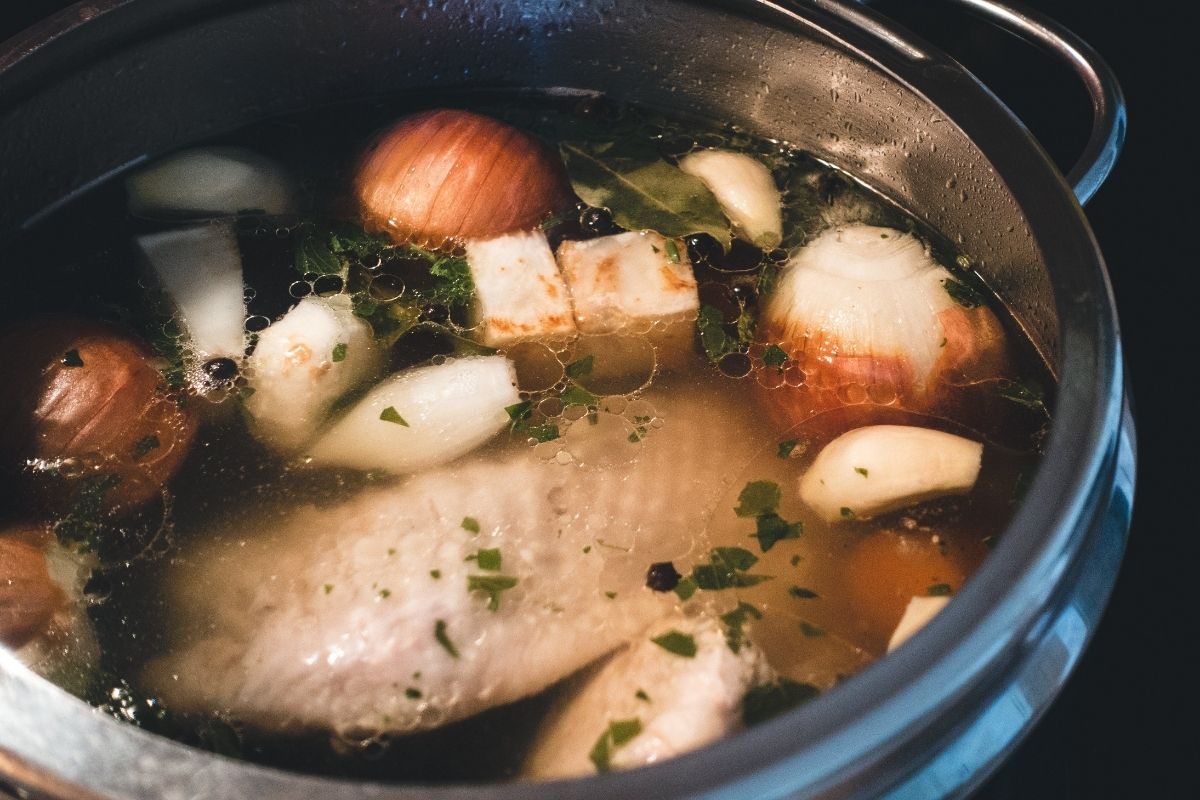
GAPS Baby Food Introduction Timeline
- You can introduce solids gradually starting at about 6 months of age. Start with a tiny amount once a day then gradually increase the amount and feed several times a day.
- Start with a salt free homemade stock / broth. Sieve it, you will need only the liquid part (with the fat – it’s important). Start with 1-2 teaspoons before every breastfeeding session. As your baby is comfortable with the amount, you can increase it and try giving it in a bottle.
- The you can add freshly squeezed vegetable juices (mixed with a bit of warm water). The same way as the stock – 1or 2 teaspoons (in this case between meals, on an empty stomach). Start with 1 type of juice (first make sure the baby is not allergic) – for example carrot, then try add a little bit of celery juice or cabbage juice.
- After one week when the baby gets accustomed with the stock and juices, and everything goes well, then you can add probiotic food to the stock (about 1/2 teaspoon) it can be the juice from fermented vegetables like sauerkraut (not the vegetables) or whey from homemade yogurt (if the baby is not allergic to dairy) or use a probiotic capsule. It will help replenish the gut flora quickly and improve digestion.
- After another week, if everything goes well, you can start feeding the baby with soups like chicken soup (stock + meat + veggies), vegetable soup or make purees from cooked vegetables (any except starchy ones: potatoes, sweet potatoes, yams or parsnips). Add stock as the blending liquid. Always add some fat to the purees (1 teaspoon), it could be some animal fat, cod liver oil (about 4-5 drops, very important), coconut oil, ghee, cold pressed olive oil or flax seed oil. Rotate the the oils every day.
- When the baby is ready you can progress to thicker purees and introduce some meat (chicken, fish, duck, beef etc. ) and organs (liver or heart). The meat and connective tissue from the stock is ideal – it’s well cooked and is easy to puree. Then you can introduce more meat recipes (beef meatballs, chicken liver muffins, chicken meatballs, turkey patties).
- After another week you can introduce the eggs. Use raw organic egg yolk (if you’re worried about contamination, at least use soft boiled egg yolks. Add 1/2 egg yolk at a time in purees or soup. Gradually increase to up to 2 egg yolks a day.
- When all these food are well tolerated you can add ripe avocado and cooked apple (apple puree cooked with a little water and fat).
- Gradually you can progress to raw fruits and vegetables. For example apple (add to the fresh squeezed vegetable juices mentioned earlier or just cut into sticks as finger food). Fruits are best assimilated when served apart from main meals. Puree the raw vegetables or serve along with stock based soups. You can actually do both purees and baby led weaning type of feeding. When introducing raw vegetables start with less fibrous ones like cucumber or lettuce and continue to expand if well tolerated.
- When you’re baby is tolerating well all foods mentioned above, you can also add some homemade fermented dairy (like yogurt, sour cream and kefir) or non-dairy fermented yoghurt, if dairy cannot be tolerated. Commercial dairy should be entirely avoided. The fermented vegetables would also be great.

GAPS For Babies – Main Key Points
- Before giving anything new to the baby make a sensitivity test. Place a drop on the baby’s wrist and check it overnight. If the skin is not red, irritated or inflamed then you’re good to go.
- Always make fresh juices at home with a with organically grown produce, they tend to have less pesticide residues. A cold press juicer is what you need.
- The stock (and food in general) should be served barely warm at body temperature, just like the breast milk.
- Don’t buy commercial stocks or juices, always make them at home with high quality ingredients that you can control.
- Consume the juices within 30 minutes. They tend to spoil and loose nutrients pretty fast.
- Keep the stock refrigerated for up to 5 days, or freeze for in ice cube trays for longer storage.
- Add some stock and probiotic food to every meal, no matter what else the baby eats. On average infants need 1/2 of a cup per day.
- Ferment/ sprout the nuts and seeds. The process of sprouting reduces the anti-nutrient content and make the nutrients bio-available and more digestible. It is especially important for babies who are still developing the enzymes to break down these plant foods. Avoid commercially available nut / seed flours as they are not usually pre-soaked and sprouted. The Nourishing Traditions book is a wonderful guide on how to ferment and sprout foods!
- The stool (loose or constipation) and skin (rash or eczema) is an indicator of tolerance, so always watch those. If it’s not good, pause that specific food for a while until your baby is ready.
- While you introduce all these GAPS foods, it is essential to continue to breastfeed at least until your baby is 1 year old (or longer if you can).
SEE Dr. Natasha Campbell-McBride GAPS book, in there you will find explanations for using all these foods, their benefits for specific conditions and examples of recipes.
Also you could find useful tips and real stories in the GAPS Diet Community Group From Facebook.
GAPS For Babies FAQ
All babies who suffer from conditions like diabetes, asthma, colic, eczema, allergies, FPIES and epilepsy.
If your baby is breastfed start the GAPS diet at around six months. If your baby is formula-fed then at 4-5 months.
It depend on the child, it could be a few months or longer. Essentially as long as your baby doesn’t have any stool issues, skin issues and mood issues.
Infants and very young babies can achieve gut healing and flora improvement fairly quickly compared to older kids, teens, and adults, so it’s best to start early.
You can have a more relaxed diet once the symptoms dramatically improve and transition to full GAPS Diet (which still avoids all grains, sugars, refined carbohydrates and all processed foods) and repeat the basic GAPS protocol every time you see a relapse.
Dr. Natasha thinks that the meat stock is less harsh on a compromised digestive system and easier to digest. The bone broth on the other hand has more complex components and is richer in histamine, and might bee too strong for a sensitive gut. When more healing is achieved, you can advance to bone broth.
You Might Also Like
Disclaimer: The information, including but not limited to, text, graphics, images and other material contained on this website are for informational purposes only and not intended for medical advice. Please refer to my full disclaimer for more info.
©ThrivingNest. Content and photographs are copyright protected and need prior permission to use. Copying and/or pasting full recipes to other websites and any social media is strictly prohibited. Sharing and using the link of this recipe is both encouraged and appreciated!
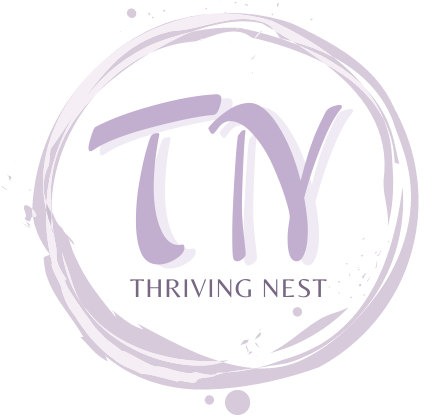
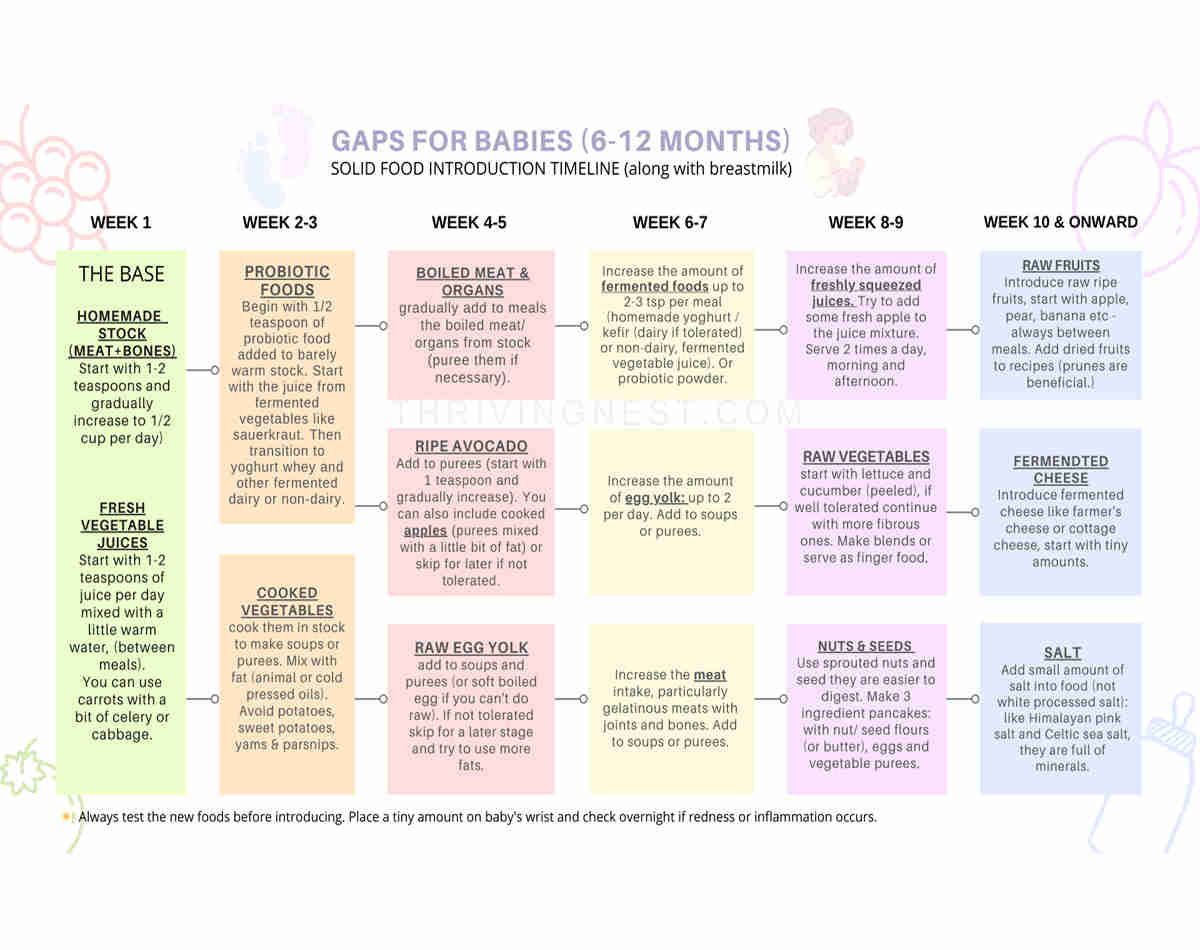
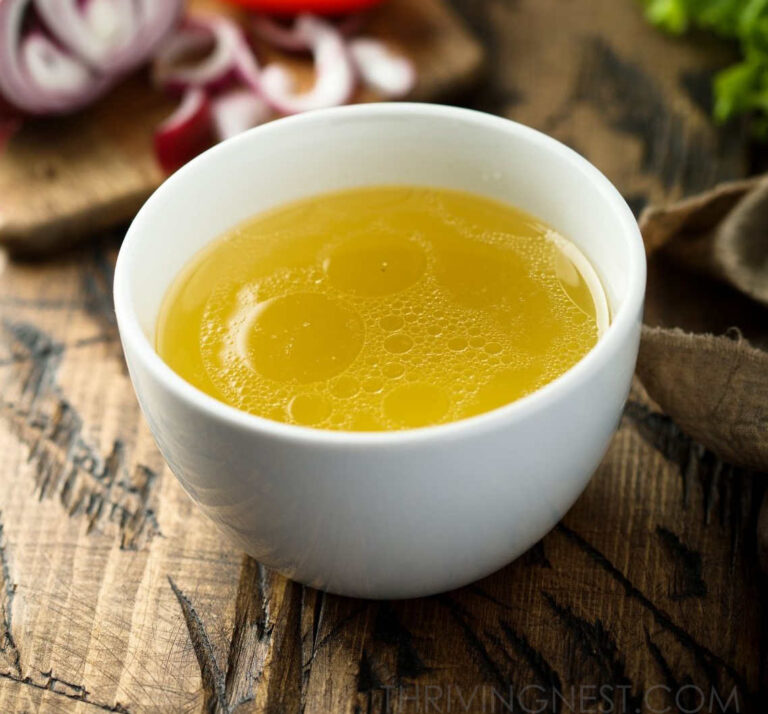
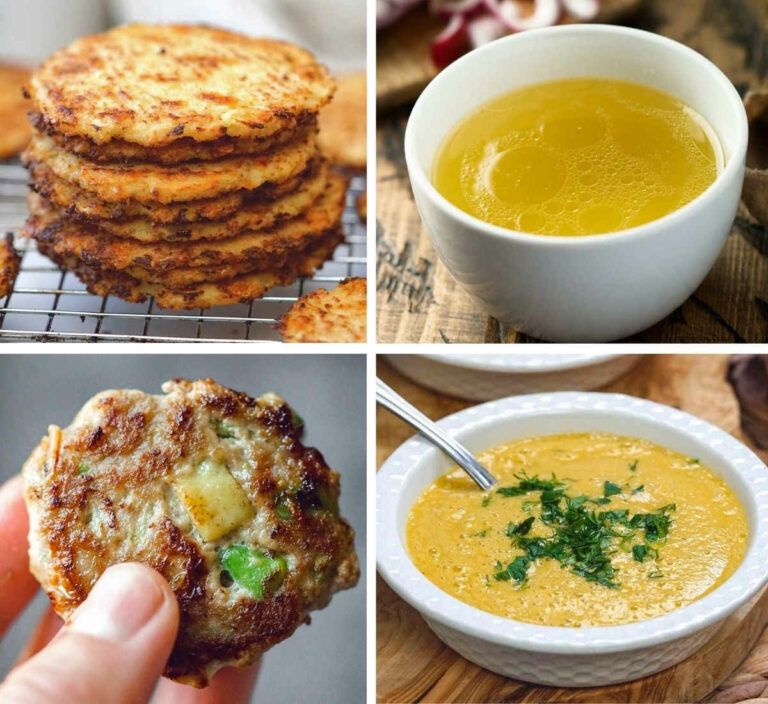

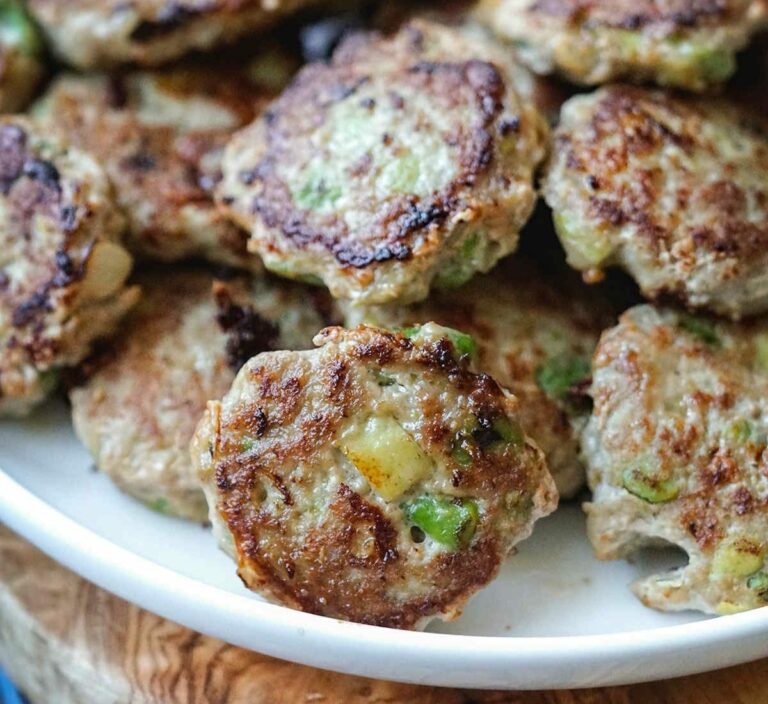
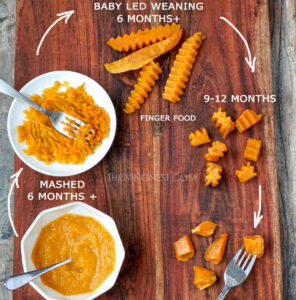


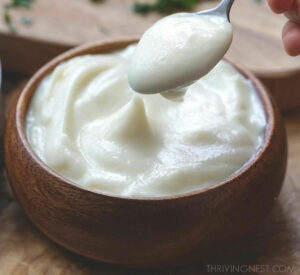
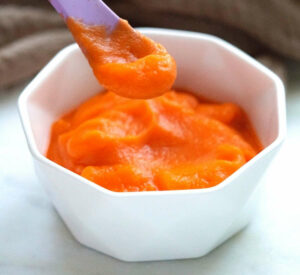
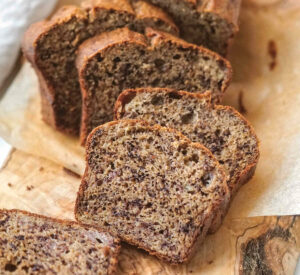
Hi ,
I just got your pdf guide . Baby is almost 9mo , his dermatitis startes at around 5 m before solids … not sure where i went wrong .. its so disheartening 🙁
Vaginal birth, breastfed fully . Had an ok pregnancy, but healthy all around …
Anyway , thank you for sharing this . Im at the start of trying to heal his dermatitis, as gp’s have given me no hope . They just hand me steroid creams and tell me to wait it out .. that is “normal”.
He s not eatmuch solids yet just tasting here and there and still fully breastfeeding, my question is – do i start his Gaps diet as if ge was 6mo and go from there?will he be ok for nutrients or do i need to supplement anything at all?
Thank you in advance ,
Julia
Hi Julia,
unfortunately you can’t determine an exact cause of such a complex issue, there is always multiple causes that pile up. But it is believed by scientific literature that mainly all starts from a poor gut microflora which babies inherit from their parents. I’m not allowed to give any medical advice since I don’t have a license, but I can direct you to a few studies you can read and make your own conclusions: 1) https://www.ncbi.nlm.nih.gov/pmc/articles/PMC7255898/ and 2) https://www.ncbi.nlm.nih.gov/pmc/articles/PMC6769289/ Or you could read Natasha Campbell’s books for more info. All I can tell if I were you, I would continue breastfeeding while keeping contact with synthetic ingredients as low as possible. Plus when starting the diet I would feed the baby with adequate amounts for his age and I would shorten the transitioning period from one food category to another to 3 or 4 days (not a week). This way the baby will get access to a larger variety of foods in a shorter period while monitoring any allergies and sensitivities. The stock based soups with veggies is a pretty good base with lots of nutrients. Also take into account that whatever we, as mothers eat, is important too, especially if we have food sensitivities as well.